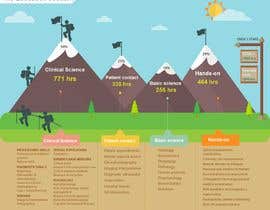Be Prepared To Decipher The Interesting Cellular Interactions Associated With Cold Laser Treatment And Its Application Of Light For The Function Of Recovery. Engage Yourself Even More Into The World Of Science!
Be Prepared To Decipher The Interesting Cellular Interactions Associated With Cold Laser Treatment And Its Application Of Light For The Function Of Recovery. Engage Yourself Even More Into The World Of Science!
Blog Article
Web Content Writer-Castro Pedersen
You may have become aware of cold laser therapy as an encouraging therapy alternative for various conditions, however have you ever before asked yourself just how it really works on a cellular level? Understanding the systems behind this therapy can shed light on its effectiveness in promoting recovery and minimizing inflammation. By exploring the science behind cold laser therapy, you'll get insights right into the remarkable methods which light can influence cellular procedures and help with tissue fixing.
Just How Cold Laser Therapy Functions
To recognize exactly how cold laser treatment functions, you need to realize the fundamental concepts of exactly how light energy connects with biological tissues. Cold laser therapy, additionally called low-level laser therapy (LLLT), makes use of particular wavelengths of light to permeate the skin and target underlying tissues. Unlike the intense lasers used in operations, cold lasers release low degrees of light that do not generate warm or create damage to the tissues.
When stem wave therapy near me get to the cells, they're soaked up by parts called chromophores, such as cytochrome c oxidase in mitochondria. This absorption triggers a collection of biological actions, consisting of boosted cellular energy manufacturing and the launch of nitric oxide, which boosts blood flow and decreases inflammation.
Additionally, the light power can also promote the production of adenosine triphosphate (ATP), the power currency of cells, aiding in cellular repair service and regeneration procedures.
Essentially, cold laser treatment uses the power of light energy to advertise healing and reduce pain in a non-invasive and gentle manner.
Mechanisms of Activity
Just how does cold laser therapy actually work to produce its therapeutic effects on biological tissues?
Cold laser treatment, also called low-level laser therapy (LLLT), operates via a process referred to as photobiomodulation. When click web page is related to the skin, the light power passes through the cells and is taken in by chromophores within the cells.
These chromophores, such as cytochrome c oxidase in the mitochondria, are then promoted by the light power, leading to a waterfall of organic reactions. One essential device of activity is the improvement of mobile metabolic rate.
The soaked up light energy raises ATP production in the mitochondria, which is critical for cellular feature and repair. Additionally, cold laser treatment helps to decrease swelling by inhibiting inflammatory conciliators and promoting the launch of anti-inflammatory cytokines.
This anti-inflammatory impact adds to pain relief and tissue recovery.
Therapeutic Results
Understanding the healing effects of cold laser treatment entails acknowledging how the enhanced cellular metabolic rate and anti-inflammatory homes contribute to its favorable outcomes on organic tissues.
When the cold laser is put on the affected area, it stimulates the mitochondria within the cells, resulting in raised manufacturing of adenosine triphosphate (ATP), which is vital for cellular function and repair service. This boost in cellular energy speeds up the healing process by promoting cells regeneration and reducing swelling.
Furthermore, the anti-inflammatory buildings of cold laser treatment aid to decrease discomfort and swelling in the targeted location. By hindering inflammatory moderators and promoting the release of anti-inflammatory cytokines, cold laser therapy help in reducing discomfort and improving the overall recovery response.
This decrease in inflammation not just gives prompt relief but likewise sustains long-term cells repair work.
Verdict
To conclude, cold laser therapy functions by boosting mobile repair service and cells regrowth through photobiomodulation. Its anti-inflammatory properties supply discomfort relief and minimize swelling by inhibiting inflammatory arbitrators.
This therapy uses a detailed strategy to healing, providing both instant relief and long-lasting tissue repair service benefits.
Via its devices of action, cold laser treatment proves to be an efficient and promising treatment option for a variety of conditions.
